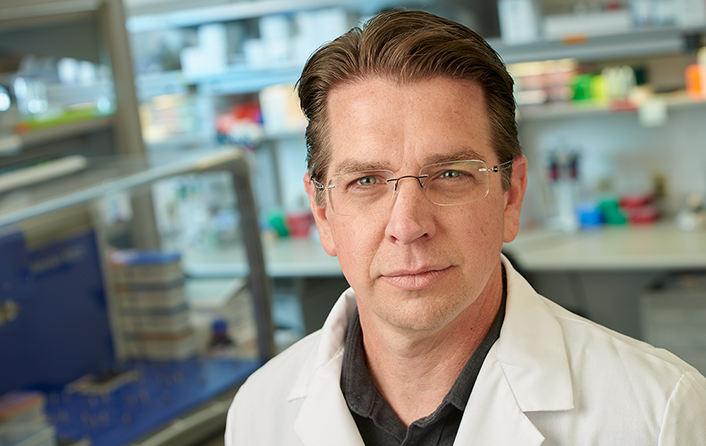
-
- Posted Tuesday October 1, 2019
Did Pacific Northwest fungal infection hitch a ride on a massive 1964 tsunami?
Scientists offer theory on how C. gatti arrived in inland forests
FLAGSTAFF, Ariz. — Oct. 1, 2019 — For decades, researchers have wondered how a potentially deadly fungus, commonly found in tropical environments, made its way into the temperate forests of the Pacific Northwest, where it has led to sometimes fatal outbreaks among both people and animals.
Now comes a new theory, published today in the scientific journal mBio, that suggests a combination of ballast water from ocean shipping, and tsunamis from one of the planet’s strongest earthquakes, may have combined to move Cryptococcus gattii from near the equator, into the Pacific Northwest.
Dr. David Engelthaler — Co-Director of the Pathogen and Microbiome Division of the Translational Genomics Research Institute (TGen), an affiliate of City of Hope — previously posited that ballast water contaminated with C. gattii was dumped from ships into the Pacific Ocean waters off the coast of northwestern North America. Using genomic analysis and advanced statistics, Dr. Engelthaler reasoned that the appearance of this disease in the Pacific Northwest followed the 1914 opening of the Panama Canal, allowing cargo ships to move the fungus from eastern Brazil to western Canada.
In today’s mBio publication, Dr. Engelthaler, Ph.D., a genomic epidemiologist, and Dr. Arturo Casadevall, M.D., Ph.D., a microbiologist at the Johns Hopkins Bloomberg School of Public Health, make the case that devastating tsunamis following the 1964 Alaskan earthquake could have carried the C. gattii infection from the ocean up into the coastal forests of Alaska, British Columbia, Washington, Oregon and northern California, places where the fungus has been found and people have been infected.
“There were a lot of pieces to this puzzle. When we started putting them together, it seemed that a singular event, like a natural disaster, could have been the missing piece that brought the whole picture together,” Dr. Engelthaler said. “The tsunami idea seemed to fit the when, where and why of this disease emergence.”
At magnitude 9.2, the 1964 Alaskan earthquake was the second largest ever recorded on the planet, exceeded only by a 9.5 magnitude earthquake in Chile in 1960. The tsunamis that followed the 1964 event rose more than 200 feet high, and traveled thousands of miles, as far as Hawaii.
C. gattii — which until a 1999 outbreak in British Columbia’s Vancouver Island was considered primarily a tropical fungus found in places like Brazil, New Guinea and Australia — can cause deadly lung and brain infections in both people and animals. Since 1999, more than 300 cases have been reported in the Pacific Northwest, mostly in Oregon, Washington and California.
Symptoms include cough, shortness of breath, chest pain, fever, headache, neck pain, nausea, vomiting, sensitivity to light and confusion or changes in behavior. Treatment can include months of intravenous and oral anti-fungal drugs, and in some cases surgical removal from the lungs and central nervous system. This pathogen is not contagious. It is most commonly found in soil near trees.
The authors acknowledged the hundreds of clinical, veterinary, public health, environmental and academic professionals who have dedicated thousands of hours of work over the previous two decades to help understand the emergence of C. gattii in the Pacific Northwest.
This study — On the emergence of Cryptococcus gattii in the Pacific Northwest: ballast tanks, tsunamis and black swans — was funded by grants from the U.S. Center for Disease Control and Prevention (200-2016-92313) and the National Institutes of Health (5R01AI052733 and 5R01HL059842).
# # #
About TGen, an affiliate of City of Hope
Translational Genomics Research Institute (TGen) is a Phoenix, Arizona-based non-profit organization dedicated to conducting groundbreaking research with life-changing results. TGen is affiliated with City of Hope, a world-renowned independent research and treatment center for cancer, diabetes and other life-threatening diseases: www.cityofhope.org. This precision medicine affiliation enables both institutes to complement each other in research and patient care, with City of Hope providing a significant clinical setting to advance scientific discoveries made by TGen. TGen is focused on helping patients with neurological disorders, cancer, diabetes and infectious diseases through cutting-edge translational research (the process of rapidly moving research toward patient benefit). TGen physicians and scientists work to unravel the genetic components of both common and complex rare diseases in adults and children. Working with collaborators in the scientific and medical communities worldwide, TGen makes a substantial contribution to help our patients through efficiency and effectiveness of the translational process. For more information, visit: www.tgen.org. Follow TGen on Facebook, LinkedIn and Twitter @TGen.
Media Contact:
Steve Yozwiak
TGen Senior Science Writer
602-343-8704
[email protected]


